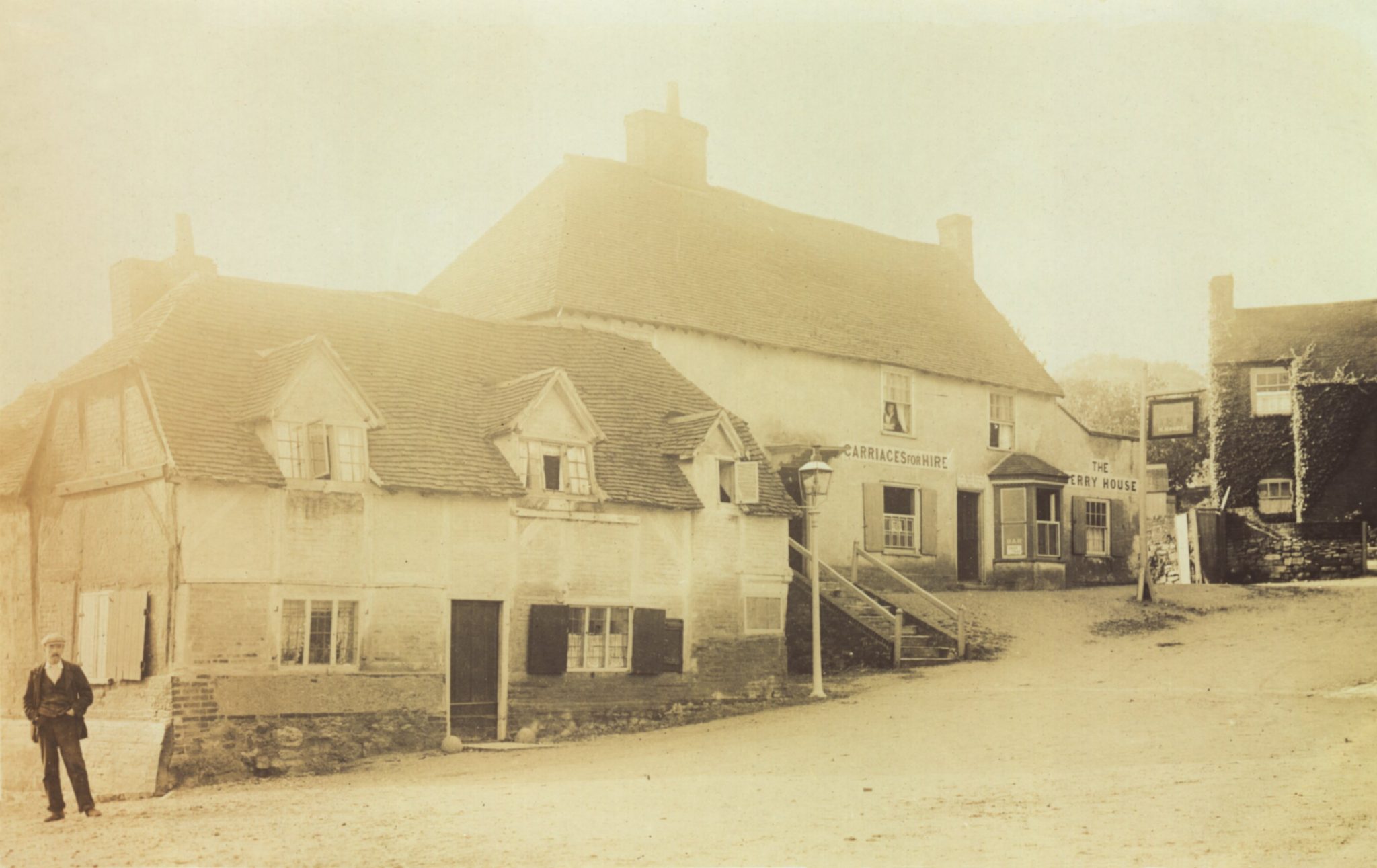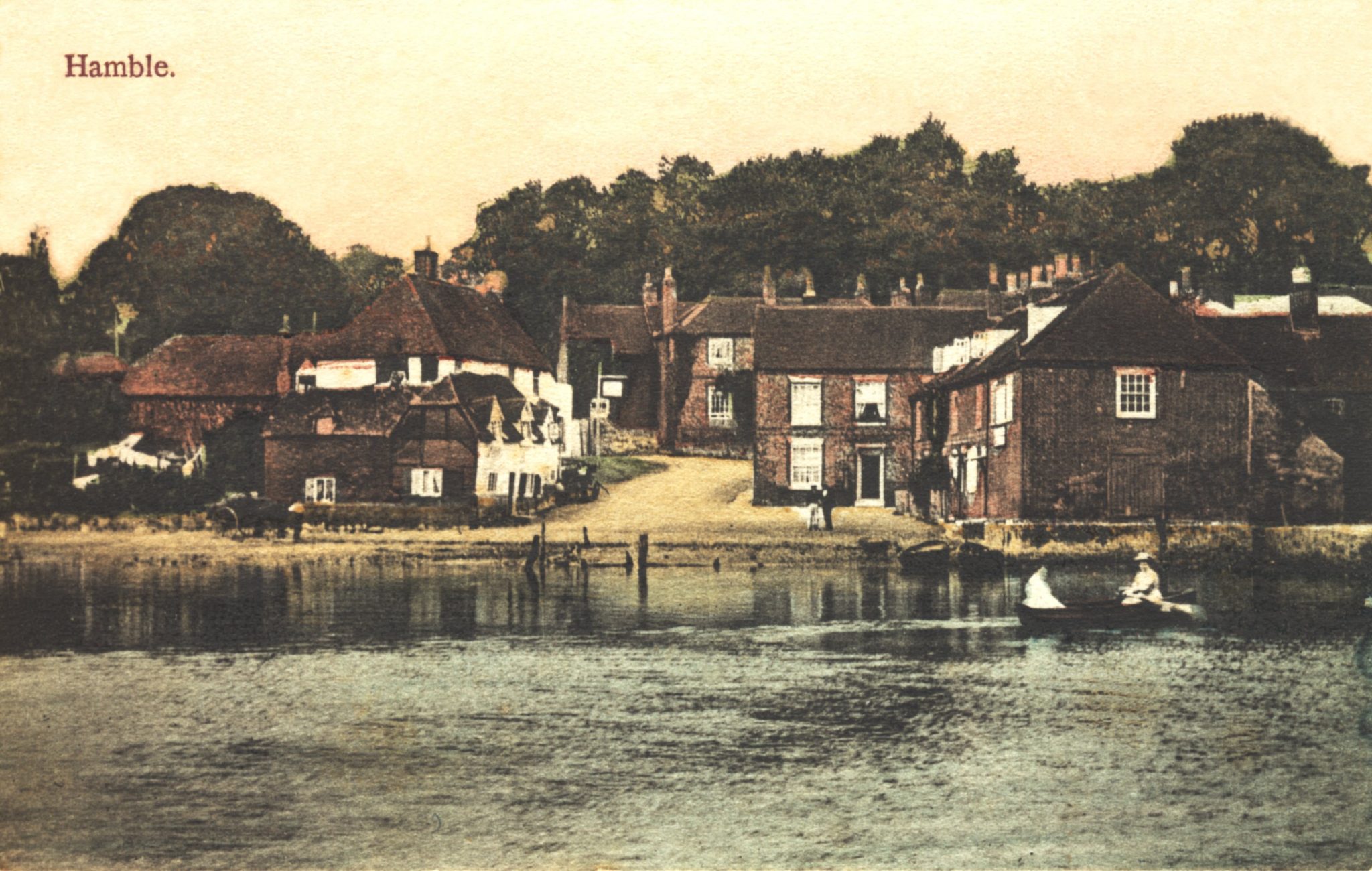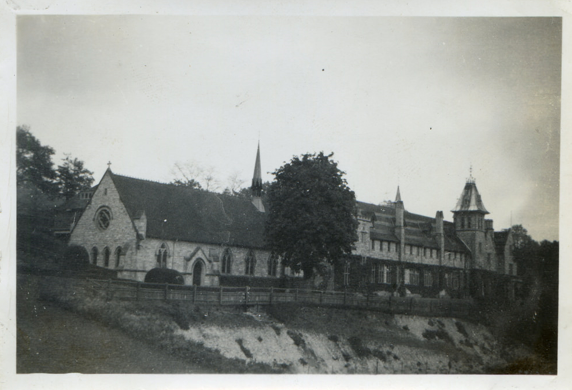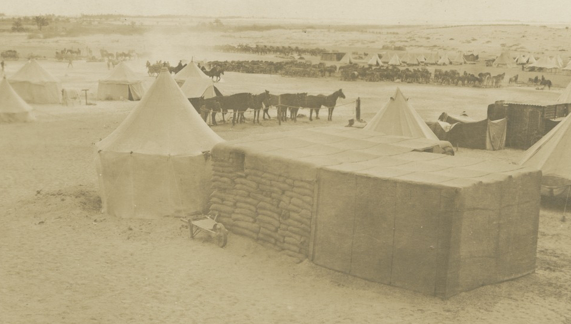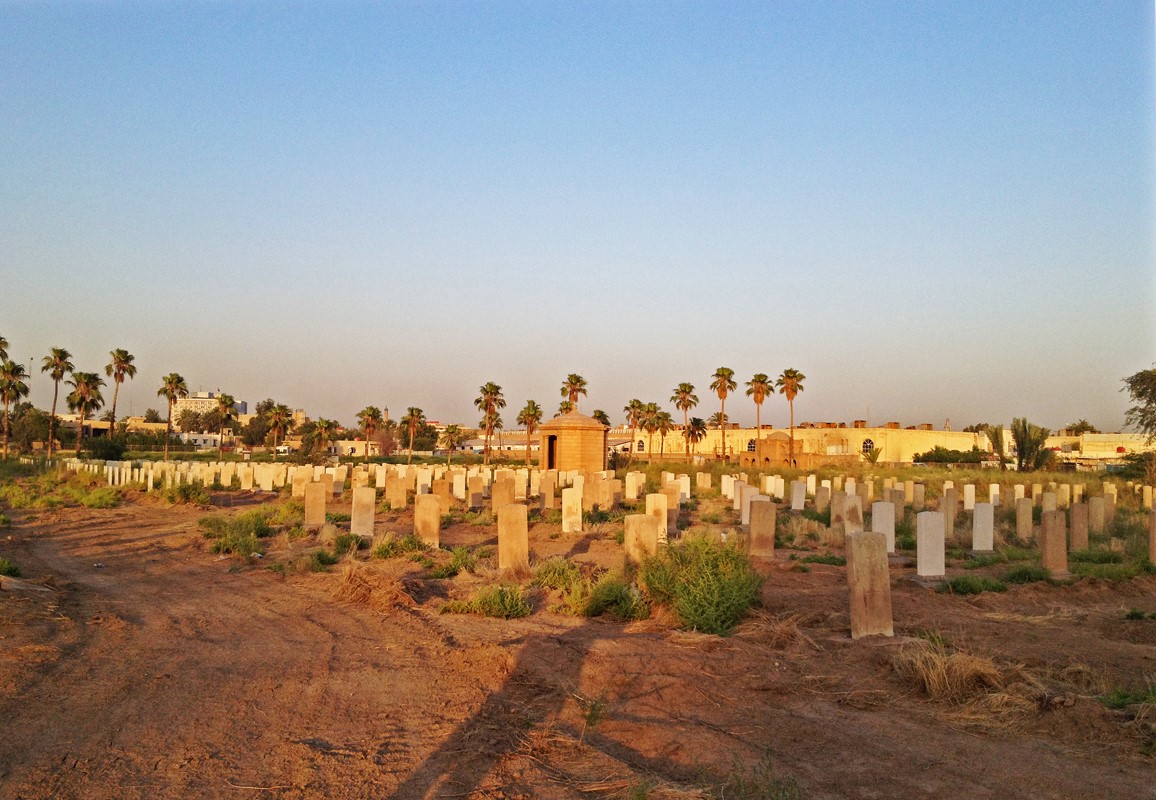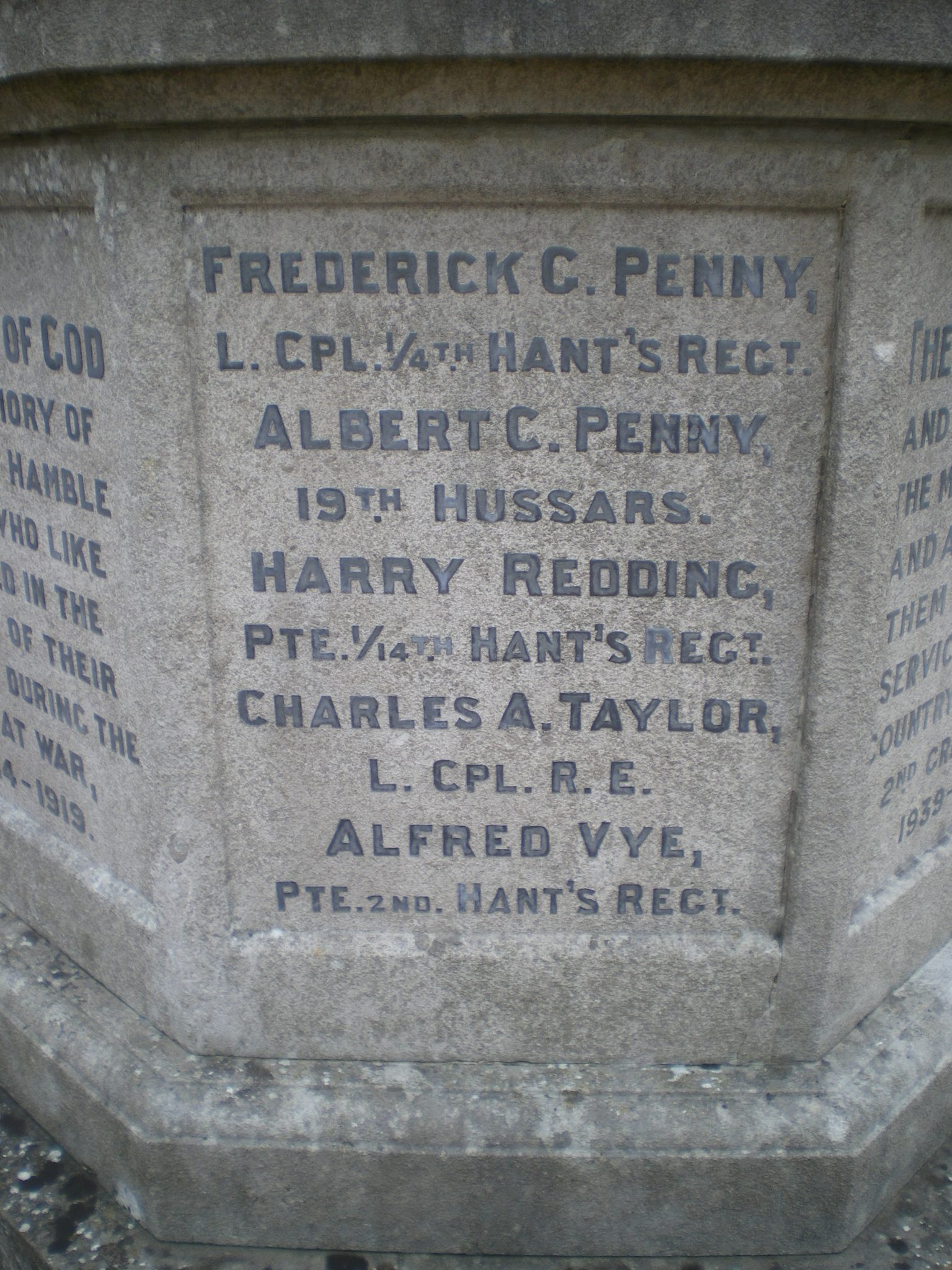Frederick George Penney
Lance Corporal Frederick George Penney of the 1/4th Hampshire Regiment (T.F.) Battalion, Regimental Number 200790, died of illness on 29th November 1917, aged 25, and is buried at Baghdad North Gate Cemetery, Iraq.
Early Life
Frederick was born on 30th September 1892, to Albert Edgar, a fish merchant, and Caroline (née Matthews) Penney, at Hamble,1 Hampshire. He was the second child in the family, one of whom was an adopted cousin. He had an older brother Albert (1891), and four younger sisters, Elizabeth (born 1895 died 1896), Winifred (1897), Edith (1902), and Emily Matthews (1892) who was the adopted niece of Caroline. The Matthews family tree shows that Caroline, at the time of the 1871 census, was one of five children, all of whom were born in Titchfield, Hampshire. She had three older brothers, and also a younger sister Sarah Ann. All of Caroline’s own children were born in Hamble. Emily, like Caroline, was born in Titchfield. Records suggest that Emily Matthews was the illegitimate daughter of Caroline’s brother Frederick and Mary Lock, who eventually married in 1900, although their daughter remained with Caroline. In the 1901 census the family employed a general servant to help in the house, 19 year old Harriet Williams.
Hamble-le-Rice is a village in the borough of Eastleigh. It is situated at the tip of the Hamble peninsula. Frederick was educated at Hamble National School before attending Taunton School in Southampton.
By the census of 1911, Frederick was described as a school teacher. Frederick then became a pupil teacher at Bursledon School in Southampton. He was still only 18 years old and had not yet attended College for his professional training. He took his Preliminary Examination for the Certificate in 1911, as well as the Archbishops’ Examination for Admission for which he was awarded a class 2 pass. By the autumn of 1911, Frederick would begin his two years at Winchester Training College.
This photograph is believed to show the Penney family home. Planning permission to replace this old and run-down cottage was granted in 1907, and a new dwelling was built sometime before 1910.
Winchester Training College
The students at Winchester Training College produced their own magazine called The Wintonian. It is through the articles in this that we can learn a little about the interests of our fallen alumni. Frederick is mentioned in the sections on sport. In his senior (second) year he achieved first place in the cricket ball throwing event at Sports’ Day. The annual competition was a mixture of serious and light-hearted events. As well as the traditional running races over a variety of distances, high jump and cricket ball throwing, there was the opportunity for the students to participate in slow bicycle races and the intriguing umbrella and cigarette race. Unfortunately there is no explanation as to how this particular race was run. Frederick was also Vice-Captain of the First XI football team. Football competitions were an important part of the life of the students. There were first and second XI teams which played competitive matches against other local teams. There were also inter-college competitions organised differently over the years, some years they were between dormitory teams.
Students sat examinations at Christmas and midsummer each year. In the first set of exams in 1911, Frederick had an average mark of 60.4%, which placed him 32nd in the order of merit for his cohort”a position he retained the following year in the 1912 Christmas exams. At the end of two years at College Frederick was given Grade B for Physical Training, C for Reading and Drawing and D for Teaching and Music. He achieved Class 2 passes in his end of College exams and Class 1 in his Archbishops’ Religious Knowledge Examination. He passed the Board Of Education exam, but no mention is made of a grade.
When Frederick had completed his training he was appointed as an assistant teacher at Swaythling School in Southampton. The school in Swaythling was built to accommodate 150 children and had a budget of £1,000. Miss Elizabeth Cockroft was appointed as the first Headmistress on a salary of £75 p.a. On 31st August 1898 the Bishop of Winchester opened the school. The school log book records Miss Cockroft’s thoughts on her first day:
I Elizabeth Cockroft, commenced my duties today as Headmistress of this school. For the past 18 years I have been Headmistress of Mytholmroyd Board School in Yorkshire. I have admitted 46 children today of whom only 7 have attended school before. They have no idea of school discipline and seem to be backward in nearly everything.
In 1908 Miss F Higgs took over the Headship and a second school was opened for children aged 7 to 13. This was Swaythling Council School where Frederick began his short career. It was designed to educate 350 children. The school day started with assembly, the boys and girls lined up on different sides of the room. At the end of the assembly the children paraded out to the sound of a military march, played on the school piano by one of the teachers. The boys walked up to the Common once a week for Games, and used the local swimming baths for their swimming lessons. While the boys were swimming, the girls stayed behind for voice training and drill. In 1912 a new cooking block was built which allowed the girls to participate in a different activity. Unfortunately the log book that covers the period of the war has been lost, but we do know that in 1916 Lady Swaythling unveiled a roll of honour.
Frederick did not have long as an Elementary School teacher as after just one year war was declared.
From Hampshire to Foreign Lands
Frederick enlisted in Bustard, Hampshire, into the Hampshire Regiment. From the War Gratuity payments in his Soldier’s Effects record we can estimate his enlistment date at September 1914. His probate record has him in the 1/4th Battalion but it is likely that he was originally in the 2/4th Battalion and transferred later. At some point in his military career Frederick was promoted to Lance Corporal. The 2/4th Hants were garrisoned in Quetta, prepared to supply reinforcements when required, for the campaign in Mesopotamia. They had left England for Quetta, India 2 in December 1914. Several of his contemporaries from College had volunteered for active service in Mesopotamia while with the 2/4th Hants in Quetta. Christopher Burt, who was killed in action in Mesopotamia, was in the same year as Frederick, and he would almost certainly have known several others from Winton events while he was at College. Those who volunteered for active service in Mesopotamia left Quetta in October 1915. They were afforded a fine send off with an inspection by General Hardie, and concerts were held. The morning of their departure to Quetta Station they were inspected again by General Grover and headed by the band and drums they marched off, cheered on by the majority of those left behind.
They arrived in Basra at a time when the war was going well for the Expeditionary Force, but it did not stay that way for long. The Battle of Ctesiphon, towards the end of November, was indecisive for both the Allies and the Turks. The Allies withdrew to Kut, pursued by the Ottoman Army and there, from the 7th December 1915, they were besieged. The first attempt to reach Kut began in January 1916. They had success at Shaikh-Saad and the Wadi, but were halted at Hannah-al-Umm. The Battle of Hanna saw the largest loss in any one day of the Winchester training College alumni. Four died that day including Christopher Burt who had been in Frederick’s year, and another was taken prisoner. Frederick must have felt the loss keenly that day.
A second push from the Relief Force to reach Kut, began in March 1916. This time they got as far as the Dujailah redoubt and Es Sinn but again failed to get to Kut. T. E. Lawrence’s 3 relationship with local Arab tribes was called upon at this stage to try to broker a deal, but no breakthrough was made. A third attempt in April got as far as Sannaiyat, and a bold move to send the SS Julnar up the River Tigris with supplies for the increasingly desperate men in Kut also failed. On 29th April 1916 Major-General Townshend, the Officer in Charge of the besieged Anglo-Indian force, surrendered to the Turkish Commander Halil Bey.
General Maude took over command and the new offensive was launched on 13th December 1916. The British advanced up both sides of the Tigris River and forced the Ottoman troops out of a number of fortified positions along the way. General Maude’s offensive was methodical, organised and successful, due in part to much needed reinforcements and reorganisation. Khalil Pasha had concentrated most of his troops near Kut. Maude, however, found a way to bypass most of them by advancing up the opposite bank of the Tigris. The Turkish Army only escaped destruction by fighting some desperate rear guard actions. Kut was occupied by the British who then continued their advance up the Tigris. By early March General Maude’s army was on the outskirts of Baghdad. The Ottoman forces were outmanoeuvred and their defensive positions captured. Khalil Pasha retreated in disarray and on 11th March 1917 the Allies entered Baghdad, to be greeted as liberators. General Maude halted the advance at Baghdad so as not to overstretch supply lines, but the decision was also influenced by not having been given the reinforcements he requested in order to continue. By April 1917 they were again fighting the Turks at Istabulat and by November they had reached Tikrit.
2nd Light Horse Field Ambulance in the Middle East
On the 18th November General Maude died in Baghdad of cholera. On the 29th November 1917 Frederick Penney also died of illness. We have no evidence available to say what disease killed Frederick, possibly it was also cholera, but it may have been typhus, malaria or any one of several enteric diseases rife during that campaign. A newspaper report in the Hampshire Advertiser County Newspaper on 15th December 1917, states only that he died of fever in Mesopotamia. He was treated at the 135th Combined Field Ambulance.4 5
The Field Ambulance was a mobile front line medical unit which was manned by troops from the Royal Army Medical Corps. Most Field Ambulances came under the command of a Division, in the case of 135th Combined Field Ambulance this was the 14th (Indian) Division 6 7. The Long Long Trail gives an account of what the men engaged in the campaign in Mesopotamia had to endure:
Conditions in Mesopotamia defy description. Extremes of temperature (120F was common); arid desert and regular flooding; flies, mosquitoes and other vermin; all led to appalling levels of sickness and death through disease. Under these conditions, units fell short of officers and men, and all too often the reinforcements were half-trained and ill-equipped. Medical arrangements were quite shocking with wounded men spending up to two weeks on boats before reaching any kind of hospital. These factors, plus of course the unexpectedly determined Turkish resistance, contributed to high casualty rates.
Statistics published in 19208 give the following figures:
11,012 killed
3,985 died of wounds
12,678 died of illness
13,492 missing and prisoners (9,000 at Kut)
51,836 wounded
The Relief Force had paid a high price in men for their three unsuccessful relief attempts, suffering 23,000 casualties.
Frederick is buried in Baghdad, North Gate Cemetery,9 Iraq. He left £125 6s 6d to his widowed mother, Caroline.
The Hampshire Advertiser County Newspaper carried a short obituary on 15th December 1917.
Penney “ In Mesopotamia, of illness contracted on active service, Fred Penney, second son of Mrs Penney and the late A E Penney of Riverside, Hamble.
Researcher and Author: Dee Sayers
Footnotes
- Now known as Hamble-le-Rice
- Now in modern-day Pakistan
- T. E. Lawrence is often referred to as Lawrence of Arabia
- It was not just an ambulance.
- Combined in the title of this unit indicated that it served both British and Indian troops. Previously Indian Divisions had separate field ambulances for British and Indian troops. The 14th Indian Division was formed during World War 1 for service in the Mesopotamian Campaign. It comprised Battalions of the Regular British Army, the British Territorial Force and the British Indian Army.
- Each Field Ambulance had responsibility for the care of casualties of one of the Brigades of the Division. A Field Ambulance had a theoretical capacity of 150 men, but in battle there would be many occasions when they would need to cope with far greater numbers. The Field Ambulance was responsible for setting up and operating a number of points along the casualty evacuation chain, from the Bearer Relay Posts situated up to 600 yards behind the front line, then taking casualties further back through an Advanced Dressing Station (ADS) to the Main dressing Station (MDS). The Field Ambulance also provided a Walking Wounded Collecting Station and various rest areas and local sick rooms. Each Field Ambulance would usually establish one ADS and one MDS for the Division. At full strength, a Field Ambulance was composed of 10 Officers and 224 men, divided into 3 Sections. Each Section had Bearer and Tented sub-sections. The men of the Royal Army Medical Corps did not carry weapons or ammunition.
- Statistics of the Military Effort of the British Empire (London HMSO 1920)
- Baghdad North Gate Cemetery is in the Russaffa district of Baghdad. The cemetery was begun in 1917 and as well as containing the graves of men who died in Baghdad it also contains the graves of others who were brought in from other burial grounds in Baghdad , Northern Iraq and from battlefield cemeteries in Anatolia where Prisoners of War were buried by the Turks.
Sources
Alwyn Ladell photography. (2018). Home page. [online] Available at: https://www.flickr.com/photos/alwyn_ladell/sets/72157665876163520/ [Accessed 2018].
Ancestry (2018). Home page. [online] Available at: www.ancestry.co.uk [Accessed 2018].
British Newspaper Archive (2018). Hampshire Advertiser – Saturday 15 December 1917. [online] Available at: www.britishnewspaperarchive.co.uk [Accessed 2018].
Commonwealth War Graves Commission, (2018). Home page. [online] Available at www.cwgc.org/ [Accessed 2018].
Crowley, P. (2016). Kut 1916: the forgotten British disaster in Iraq. Stroud: The History Press.
Flikr (2011). Old buildings in Hamble-le-Rice, Hampshire. [online] Available at: https://www.flickr.com/photos/anguskirk/6486457633 [Accessed 2018].
The Long Long Trail, (2018). Welcome to the long long trail. [online] Available at: http://www.longlongtrail.co.uk/ [Accessed 2018].
Swaythling Primary School (2018). A brief history of Swaythling. [online] Available at: www.swaythlingprimary.net/a-brief-history-of-swaythling [Accessed 2018].
Vickers, J. University of Winchester Chapel Memorial Rail image.
Ian Underdown at the Hamble Local History Society.
Wikimedia (2016). 2nd Light Horse Field Ambulance camp in the Middle East (17598644556).jpg [online] Available at: https://commons.wikimedia.org/wiki/File:2nd_Light_Horse_Field_Ambulance_camp_in_the_Middle_East_(17598644556).jpg [Accessed 2018].
Wikipedia (2018). 14th Indian Division. [online] Available at: https://en.wikipedia.org/wiki/14th_Indian_Division [Accessed 2018].
Wikipedia (2018). Hamble-le-Rice. [online] Available at: https://en.wikipedia.org/wiki/Hamble-le-Rice [Accessed 2018].
Wikipedia (2018). Mesopotamian Campaign. [online] Available at: https://en:wikipedia.org/wiki/Mesopotamian_Campaign [Accessed 2018].
| University of Winchester Archive “ Hampshire Record Office | ||
| Reference code | Record | |
| 47M91W/ | P2/4 | The Wintonian 1899-1900 |
| 47M91W/ | P2/5 | The Wintonian 1901-1902 |
| 47M91W/ | P2/6 | The Wintonian 1903-1904 |
| 47M91W/ | P2/7 | The Wintonian 1904-1906 |
| 47M91W/ | P2/8 | The Wintonian 1905-1907 |
| 47M91W/ | P2/10 | The Wintonian 1908-1910 |
| 47M91W/ | P2/11 | The Wintonian 1910-1914 |
| 47M91W/ | P2/12 | The Wintonian 1920-1925 |
| 47M91W/ | D1/2 | The Student Register |
| 47M91W/ | S5//5/10 | Photograph of 5 alumni in Mesopotamia |
| 47M91W/ | Q3/6 | A Khaki Diary |
| 47M91W/ | B1/2 | Reports of Training College 1913-1914 |
| 47M91W/ | Q1/5 | Report and Balance Sheets 1904- 1949 |
| 47M91W/ | R2/5 | History of the Volunteers Company 1910 |
| 47M91W/ | L1/2 | College Rules 1920 |
| Hampshire Record Office archive | ||
| 71M88W/6 | List of Prisoners at Kut | |
| 55M81W/PJ1 | Managers’ Minute Book 1876-1903 | |
| All material referenced as 47M91W/ is the copyright of The University of Winchester. Permission to reproduce photographs and other material for this narrative has been agreed by the University and Hampshire Record Office. | ||


